About Golden Palm Civet
Golden Palm Civet (Paradoxurus zeylonensis) is unique to Sri Lanka and is one of the world’s most endangered animals. In accordance with the International Union for Conservation of Nature Red List, it is classified as Vulnerable. In Sri Lanka’s hill country, its distribution is badly fragmented, and the extent and quality of its habitat in the region’s hill areas are deteriorating.
Peter Simon Pallas description of the golden palm civet was published in 1778.
Taxonomy of Golden Palm Civet
Viverra zeylonensis was the scientific name given by Peter Simon Pallas in 1778 to a specimen of the palm civet from Sri Lanka that he had collected. Several zoological specimens were discovered and described between the nineteenth and early twentieth century, including:
- Paradoxurus aureus by Frédéric Cuvier in 1822.
- Paradoxurus Montanus by Edward Frederick Kelaart in 1852 described a fulvous brown palm civet from the mountains of Sri Lanka, which he considered a variety of the golden palm civet.
- Paradoxurus stenocephalus by Colin Groves and colleagues in 2009 described a golden brown specimen from Sri Lanka’s dry zone. They proposed to regard P. montanus, P. aureus, and P. stenocephalus as distinct species based on coat color and skull measurements of specimens.
It has been determined by the genetic study that specimens of P. montanus, P. aureus, and P. stenocephalus all belong to the same haplotype. Neither a distinct species nor a subspecies, but rather junior synonyms of the golden palm civet, should be considered because of their limited genetic differentiation.
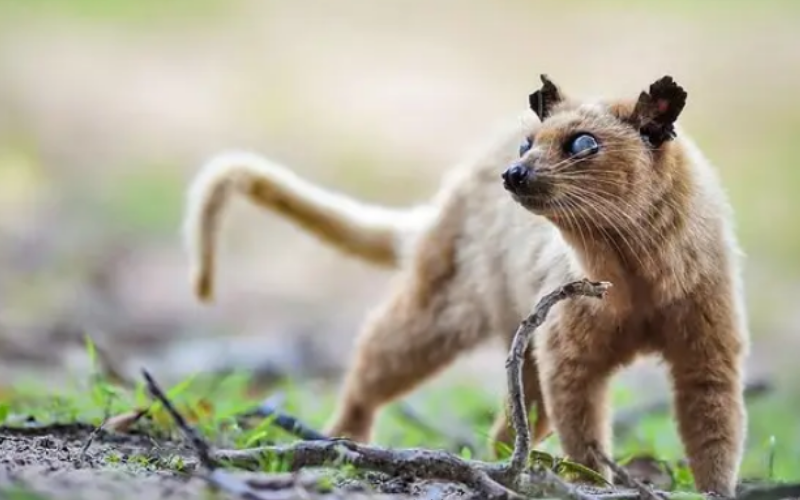
Characteristics of Golden Palm Civet
The upper half of the golden palm civet is gold to golden brown in color, while the belly is paler gold. Individuals might range in color from dark sepia to ochreous, rusty, or golden brown in appearance. The tips of the contour hairs are typically glossy, yet they can sometimes be gray in color. However, the tail and the face are sometimes noticeably whiter, and buffy-grey in color, and the legs are about the same shade as the back. The face is completely devoid of pattern, and the vibrissae have a dirty white color. The hair in front of the shoulders is divided into two whorls, and it grows forward along the sides of the neck and the nape of the neck until it reaches the crown of the head. Moreover, it extends forward on the fore neck, emanating from a single whorl, as well. There are a few weak bands and spots on the dorsal pattern that are somewhat deeper in color than the background color. In comparison to the upper side, the lower side is a little paler and sometimes greyer. The golden palm civet is found in two different color morphs: one that is golden and one that is dark brown. Monterey Specimens are darker, slightly greyish-toned wood brown on the underside, with a yellowish-white tail tip, while specimens from other places are whiter and darker on the underside.
The edges of the rounded ears are completely hairless. The pupils are vertical and the pupils are huge. Because of the presence of anal glands, it emits a nice odor that is reminiscent of Michelia Champaca flowers.
Distribution and Habitat of Golden Palm Civet
The golden palm civet can be found in lowland rainforests, montane evergreen forests, and deep monsoon forests, among other habitats.
Ecology and Behaviour
The golden palm civet is forest-dependent, but it is tolerant of slight habitat change in areas where there is still a remnant of continuous forest. In addition to being arboreal, nocturnal, and solitary, it feeds on a variety of fruits and berries, as well as invertebrates and a variety of small vertebrates.

Culture Significant of Golden Palm Civet
The Sinhala-speaking society refers to the golden palm civet as Pani Uguduwa, Sapumal Kalawaddha, Ran Hothambuwa, Hotambuwa, or Ran Hothambuwa, Hotambuwa in Sri Lanka. Both Golden and Asian Palm Civets are frequently referred to as Kalawedda in Sinhala and marina in Tamil when they are found in large groups.
The term Hotambuwa, on the other hand, is most commonly used to refer to a completely other species, the Ruddy Mongoose (Herpestes smithii). Because of their similar appearance and coloration, they are frequently mistaken for one another.
The civet is depicted on the Sri Lankan postal stamp, which costs three rupees. While the stamp is captioned “Golden Palm Cat,” this is in recognition of the great protection afforded to this indigenous species by the Sri Lankan government.
Conclusion
In conclusion, the Golden Palm Civet is a rare and fascinating animal that is native to Sri Lanka. While it may be difficult to spot in the wild, a guided tour with Ceylon Wild Tours can increase your chances of encountering this elusive creature. With their knowledgeable guides and commitment to responsible tourism, Ceylon Wild Tours offers a unique opportunity to learn about and observe the Golden Palm Civet in its natural habitat. By supporting sustainable tourism practices, we can ensure that this species and its habitat are protected for generations to come. Book your Golden Palm Civet tour with Ceylon Wild Tours today and embark on an unforgettable adventure in Sri Lanka.

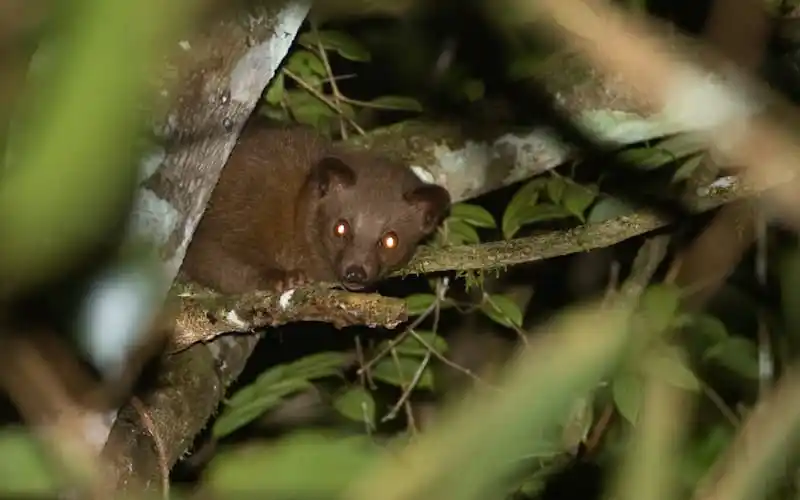




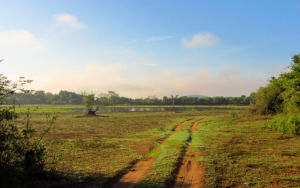
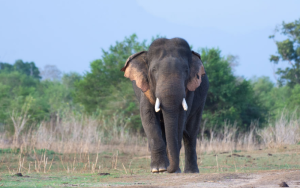
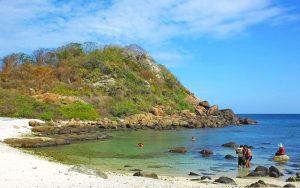
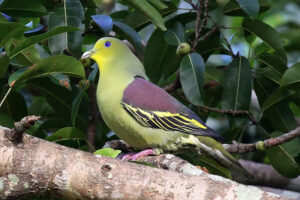
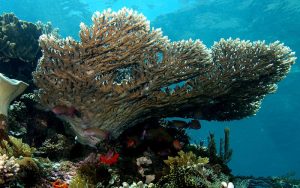

15 Replies to “Golden Palm Civet | Sri Lanka”
Thanks for sharing. I read many of your blog posts, cool, your blog is very good.
Thanks for sharing. I read many of your blog posts, cool, your blog is very good.
Woah! I’m really loving the template/theme of this website.
It’s simple, yet effective. A lot of times it’s challenging to get
that “perfect balance” between superb usability and appearance.
I must say that you’ve done a superb job with this. In addition, the blog loads super fast
for me on Safari. Outstanding Blog!
Hello i am kavin, its my first occasion to commenting anyplace, when i read this article i thought i could also
create comment due to this brilliant article.
My spouse and I absolutely love your blog and find almost all of your post’s to be just what I’m looking for.
Do you offer guest writers to write content in your case?
I wouldn’t mind producing a post or elaborating on a lot of the subjects you write regarding here.
Again, awesome web log!
Hi, after reading this remarkable paragraph i am too cheerful to share my know-how here with mates.
I was suggested this website by my cousin. I am not sure whether this
post is written by him as no one else know such detailed about my difficulty.
You are wonderful! Thanks!
Your mode of telling the whole thing in this paragraph is truly nice, all be capable of effortlessly know
it, Thanks a lot.
Usually I don’t read post on blogs, however I would like to say that this write-up very pressured me to check out and do it! Your writing taste has been surprised me. Thanks, quite great article.
Can I simply say what a relief to search out somebody who truly knows what theyre speaking about on the internet. You definitely know the way to convey an issue to light and make it important. Extra folks need to read this and understand this aspect of the story. I cant imagine youre no more well-liked because you positively have the gift.
Really Appreciate this article, can you make it so I receive an update sent in an email every time you publish a new post?
hello there and thank you for your info ?I have certainly picked up something new from proper here. I did then again experience some technical issues using this website, as I skilled to reload the site a lot of instances prior to I may just get it to load correctly. I were pondering in case your web hosting is OK? Now not that I’m complaining, however sluggish loading cases occasions will often affect your placement in google and can damage your quality rating if advertising and ***********|advertising|advertising|advertising and *********** with Adwords. Anyway I抦 adding this RSS to my email and can glance out for a lot more of your respective interesting content. Make sure you update this again soon..
Hi,
Thanks. this site has been attacked. Now everything is okay.
Thanks for the auspicious writeup. It actually used to be a enjoyment account it. Look complex to more added agreeable from you! By the way, how could we keep up a correspondence?
Hi,
Thanks. write to me on [email protected]